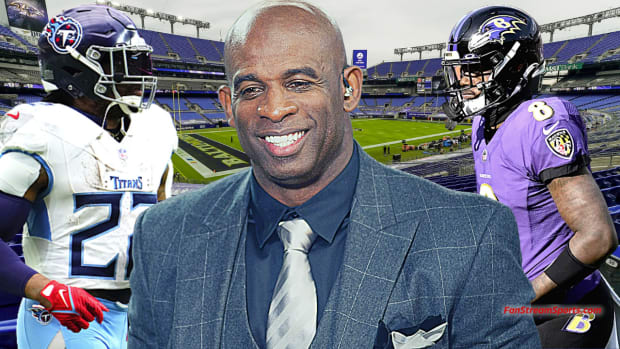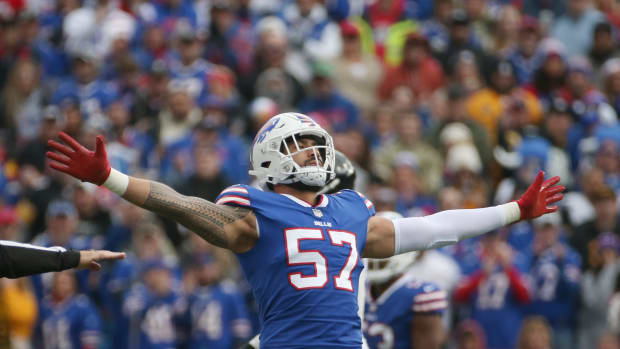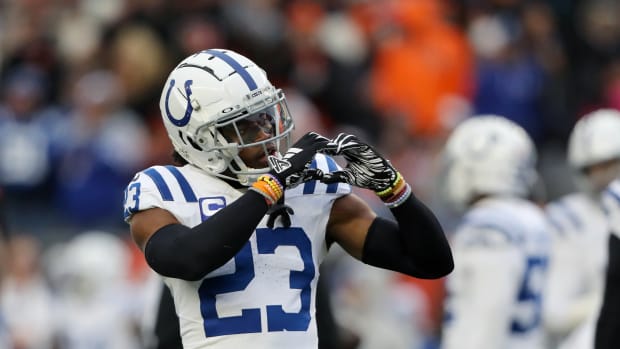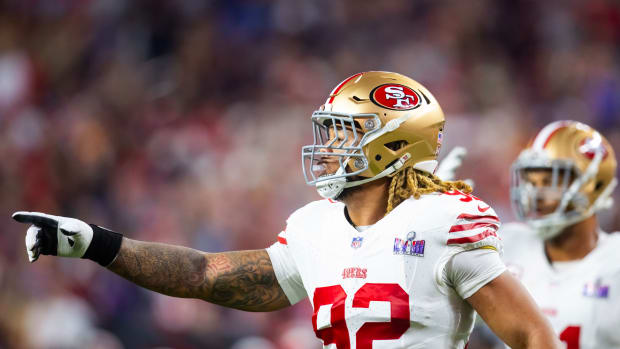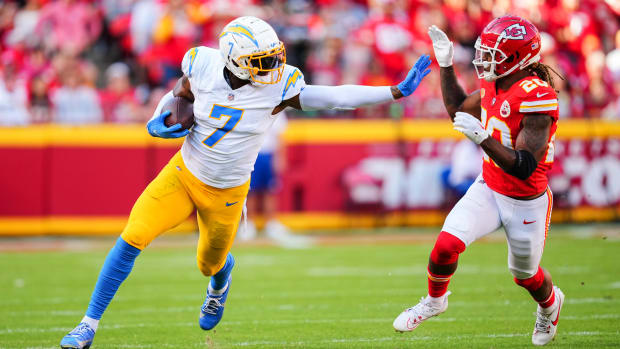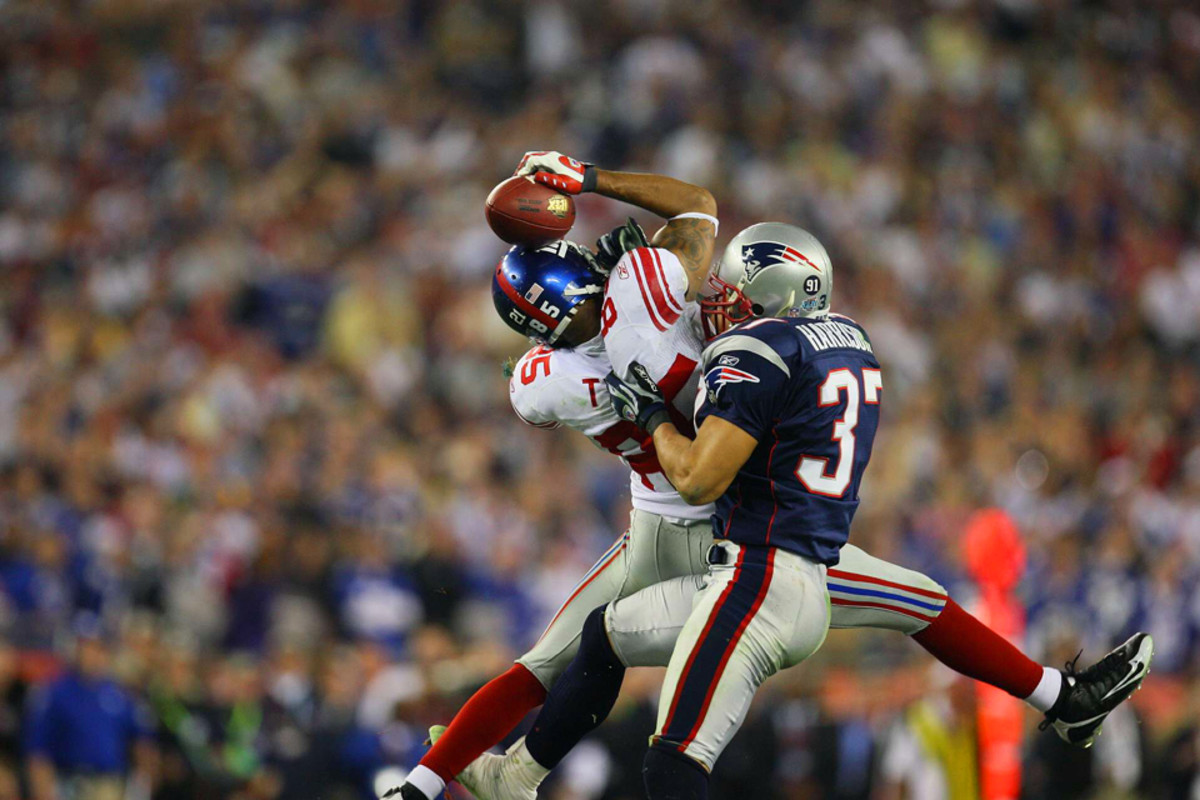
‘Joy Wells up in My Heart’
PHOENIX — Somehow it doesn’t feel quite right that David Tryee isn’t here this week, back sharing at least a sliver of the Super Bowl spotlight.
Seven years ago on Super Bowl Sunday, Tyree’s life changed forever in the Valley of the Sun, when his near-miraculous “helmet catch” became the iconic image of the New York Giants’ improbable 17-14 upset of the undefeated New England Patriots in XLII.
The Patriots have returned, of course, still seeking that validating fourth ring. But Tyree didn’t make the trip. Not even for a lucrative autograph event or a staged-for-TV re-creation of his magical catch at University of Phoenix Stadium in nearby Glendale. In early 2008, Tyree was a reserve Giants receiver and return man who etched his place in NFL lore with what many consider the greatest single play in Super Bowl history: hauling in a 32-yard desperation pass from Eli Manning on third-and-5 with 59 seconds remaining—the critical gain that set up Manning’s game-winning 13-yard touchdown pass to Plaxico Burress four plays later.
Today, Tyree, 35, is in his first year as the Giants’ director of player development, offering off-field guidance and support to New York’s players, both past and present. When I spoke to him on the phone recently, he surprisingly hadn’t received any feelers or invites to make his way to Phoenix, with the Super Bowl back in town for the first time since his career’s defining moment.
“Actually, I’m not coming out, and this might be like the first Super Bowl I don’t have anything going,” Tyree said. “I’ve never really sought opportunities, and I haven’t been a marketing guru behind the catch or anything like that. I’m grateful for what I’ve done, and there are still times I wish I would have done some things around it, but I don’t think it’s necessarily too late. It’s such a significant part of the history of the game, but I really haven’t done anything but a few interviews with the game being back in Phoenix. But it’s still exciting and it’s good to always be a part of the conversation when the Super Bowl comes around.”
The MMQB on Super Bowl 49
Richard Sherman is back—in the Super Bowl spotlight, and on the cover of SI The roots of Russell Wilson Bedard’s prediction: Why the Patriots will win The men playing in XLIX are remembered by high school and college coaches The Legion of Boom on what unites them, and where they stand in historyEverything you need to know about Patriots-SeahawksThe Super Bowl referee’s remarkable comeback storyThe battle for the Lombardi Trophy will be a close oneNBC’s Al Michaels on calling his ninth Super BowlThe MMQB’s Super Bowl Hub
Many forget that Tyree, who had a brutal day of dropping balls during the Friday practice before the Super Bowl, contributed more than just his helmet catch in an upset for the ages. After having no touchdown catches during the 2007 regular season, he ended that skid by grabbing a 5-yard scoring pass with 11:05 left in regulation, putting the Giants up 10-7 and helping set the stage for the drama still to come.
But it was the masterpiece that he and Manning created in the game’s final minute that will forever be his claim to Super Bowl fame. In the midst of a collapsing pocket, Manning somehow escaped the grasp of three Patriots defenders and found just enough time and space to deliver a deep pass to Tyree in the middle of the field, with the receiver pulling down the ball and pinning it against his helmet with one hand, all while New England safety Rodney Harrison furiously tried to dislodge it.
Little did Tyree know, as he jumped to high-point the ball, that the moment would be the high point of his solid-but-undistinguished career. That impossible catch would be the last one he’d make in the NFL. He missed the 2008 season due to injuries, and then retired in ’09 after a brief stint with Baltimore.
“In some ways I look at the catch as the culmination of a lot of things in my life,” Tyree said. “It was really a culmination of a journey of faith and adversity and that’s why it’s so significant for me personally. Because from the time I was a kid, I wanted to be remembered. I don’t know why. It was just one of those things as a kid where I would hear about other people who had somebody who was famous or significant in their family, and I just wanted to be remembered for something like that.
“I can even recall an interview I gave in college at Syracuse, where I was trying to block punts and I hit the punter and drew a flag, and the reporters were like, ‘Why would you do something stupid like that?’ And I was like, ‘I’m not playing this game just to get it over with. I want to do something significant, I want to be remembered.’ So that catch was really the embodiment of my desire that I had even as a young man, not even knowing what my life would hold. It’s a story of faith, of seeing your faithful promise from God come to pass. So there’s a lot behind the scenes that most people would never really grasp, and it really is so much more than just a catch.”
Harrison wasn’t behind the scenes the night of Feb. 3, 2008. He was behind Tyree, who didn’t even realize until much later that one of the game’s most physical, contact-loving safeties was the guy fighting him for that ball. Tyree and Harrison were a tangle of bodies on their way down to the turf, and the defender’s valiant effort to break up the pass was another element that adds to the play’s legend.
“I’m not sure if I even genuinely understood it was Rodney on my back as the play unfolded,” Tyree said. “I remember as I secured the catch and was covering up, he was trying to strip the ball out, but none of that was really processing. I know that [fellow receiver] Steve Smith came over and jumped on the pile, getting Rodney up off me, but it didn’t mean much to me at the time, because obviously we still had to win a football game.
“I didn’t even see the catch until I got back to the hotel later that night, so I didn’t really know any of the significance or magnitude until we actually left the stadium and got back to the hotel to enjoy the festivities. That’s where I realized it was Rodney, but it wasn’t really important to me at the time that it was him, even though I understand he’s taking things personally since.”
Harrison once agreed to write the forward to Tyree’s 2008 biography, “More Than Just The Catch,” but that never happened, with Harrison and Tyree eventually sparring over the play and its fallout. Harrison has called Tyree’s catch a product of “luck,” and repeatedly noted that New England’s defense didn’t even prepare for the lightly regarded backup receiver. Tyree told me, “I don’t attribute it to luck, because I don’t believe in luck,” and he has called the play “a divinely appointed moment, a purpose-filled moment” that was “beyond my personal skills, obviously.”
Their divergent perspectives aside in matters of football and fate, Tyree credits Harrison for adding greatly to the play’s degree of difficulty, which only adds to its lore. Without Harrison climbing on his back, Tyree’s catch is just a big catch, with most of the credit going to Manning for his Houdini act at the line of scrimmage.
“I don’t think you can make a better play on the ball as a defender,” Tyree said. “He did everything in his power, and he lived up to his reputation as a great football player, a great safety, and a physical safety who’ll do anything to dislodge the ball from his opponent.
“He actually dislodged the football, because I did for just a split-second have two hands on it, but he got one of them off it. But I was still able to secure it with one hand on the side of my helmet, and obviously the only thing going through my head at that points is, ‘I’m not letting this thing go.’ I didn’t really know what was going on, but I knew I’ve got this ball, even though as we’re coming down he’s ripping at my arm.”
The irony of Tyree’s career essentially being finished by the time he completed that catch is a cruel twist he initially struggled with. He didn’t want this moment of glory to be the end of his story, at least in terms of his playing career, and being constantly reminded about the play wasn’t helpful. He wasn’t yet ready to live and dwell on memory lane.
“I think I did tire of talking about it, when I was still playing,” Tyree said. “That was obviously a desire to move forward and try to revive my career. But that passed with time. I came to realize I really didn’t have anything to complain about in my career. I had played in a Pro Bowl as a special-teams player. I had won a Super Bowl. I had what some called the greatest play in Super Bowl history. What more could I really ask for? So I have come to terms with the way things happened and I have a great peace about it.”
Not a week goes by now that Tyree doesn’t relive the catch for someone, somewhere. He won’t be doing it in Phoenix this week, where his life was so memorably altered. But on Super Bowl Sunday, with the Patriots again chasing a ring in Glendale, Tyree’s helmet catch is topical once again.
“I’m humbled when people want to have that conversation,” Tyree said. “Working for the New York Giants, there are so many people that come through the building, and there’s a good amount of me being introduced to people that way. It’s an expectation, but it’s a privilege. Joy wells up in my heart, because I know the significance of what a moment like that means to an individual. And when that moment comes to share it anew with them, I feel it’s just as special in some manner to them as it is to me.”
Follow The MMQB on Facebook, Twitter and Instagram.
[widget widget_name="SI Newsletter Widget”]











































